This piece is part of a series titled “Nonstate armed actors and illicit economies in 2024” from Brookings’s Initiative on Nonstate Armed Actors.
Ethiopian Prime Minister Abiy Ahmed can celebrate the New Year with diplomatic achievements. He can interpret Ethiopia’s official entry into the BRICS bloc of developing countries not as diplomatic theater but as landmark recognition of his vision for Africa’s second-most populous state. The prime minister can applaud the final filling of the Grand Ethiopian Renaissance Dam, a unifying point of national pride, and the resumption of vital food assistance from the U.S. Agency for International Development. In October, as his government demanded, the mandate of the United Nations independent commission looking into war-time atrocities expired. While fragile, the November 2022 cessation of hostilities agreement with the Tigray People’s Liberation Front (TPLF) has held, ending the 21st century’s most deadly conflict.
A new East African order
Yet Abiy, the hyperactive 2019 Nobel laureate, reached for more. On New Year’s Day, he signed a memorandum of understanding with the leader of Somaliland, the breakaway (and unrecognized) region of Somalia. News reports indicate that Ethiopia will lease a stretch of Somaliland’s coastline to gain seaport access for the world’s most populous landlocked state, in return for Somaliland receiving its first diplomatic recognition and a share of Ethiopian Airlines.
Abiy undoubtedly tallies a potential seaport on the positive side of his hypothetical New Year’s ledger and offers assurances of peaceful intents (despite bellicose statements that unnerved his neighbors). Like the Renaissance Dam, Red Sea access — which Ethiopia enjoyed before Eritrea’s 1993 independence — unites otherwise fractious Ethiopians. But Abiy’s opening the question of internationally recognized borders risks uniting regional leaders against him. Somalia’s leaders reacted with outrage to Abiy’s plan, and Djibouti fears losing the economic lifeline of Ethiopian transit trade. Add to this Abiy’s now problematic relationship with Eritrean President Isaias Afwerki and a competitive one with Kenyan President William Ruto, and Ethiopia’s traditional leadership role in the Horn of Africa appears precarious.
Nevertheless, highlighting a potential seaport provides a welcome diversion from the negative side of Abiy’s New Year’s ledger. Ethiopia’s food insecurity is projected to worsen. While GDP should accelerate in 2024, the failure to conclude an agreement with the International Monetary Fund by March 31 would unravel a Paris Club deal delaying debt servicing. In December, Fitch downgraded Ethiopia’s credit rating after Addis Ababa missed a $33 million Eurobond interest payment. Ethiopia is currently hosting over 91,000 refugees who have been displaced by Sudan’s civil war. Remaining on the sidelines of Sudan’s conflict may be awkward if the United Arab Emirates (supportive of both Abiy and Sudan’s Rapid Support Forces) demands Ethiopia’s help. (It is probably no coincidence that a Sudanese civilian leader and a Sudanese paramilitary general chose Addis Ababa as the venue for a January 2 joint declaration.) Eritrea’s apparent tilt toward the opposing Sudanese Armed Forces further complicates Abiy’s calculations.
Nonstate actors and challenges to Ethiopia’s stability
The immediate risk to Ethiopia’s stability, however, is the bewildering array of nonstate armed actors. Besides the Tigrayans (who, battle-fatigued, seem focused on internal politics), these include the Amhara Fano, a resurgent militia; the Oromo Liberation Army, irritable after talks with the government collapsed; dissidents in Benishangul-Gumuz who opposed the Gumuz People’s Democratic Movement’s 2022 agreement to disarm; and others across Ethiopia’s more than 80 distinct ethnic groups. Somalia’s al-Shabab attacks Ethiopian troops in Somalia and threatens Ethiopian border towns. In addition, the Eritrean Defense Forces remain entrenched in border areas, allegedly continuing to commit the rape and atrocities that characterized their intervention in the Tigray war. Conflicting territorial claims with multiple neighbors can turn violent.
The internal insurgencies, especially in Amhara and Oromia, pose the primary threat to Ethiopia’s stability. Linking all of Ethiopia’s insurgencies is the question that has bedeviled Ethiopia for centuries: how much power can be exercised locally? Clashing ethnic claims to territories exacerbate the region-center disputes, illustrated by ongoing fighting in Amhara, Ethiopia’s second-most-populous region.
The Amhara regional government’s special forces sided with federal forces (and the Eritreans) in the 2020-2022 war, as did the Fano. While the Eritreans, with their fratricidal hatred of the Tigrayans, reportedly committed most of the worst atrocities, the Amhara fighters participated in the ethnic cleansing of Western and parts of Southern Tigray — mixed population areas previously part of Amhara (and known respectively as Welkait and Raya) but constitutionally annexed to Tigray in 1991 by the TPLF-dominated government that replaced the Mengistu DERG regime.
Beyond Tigray: Unrest in Amhara and Oromia
The November 2022 Pretoria agreement ended one of Ethiopia’s bloodiest center-vs.-region wars but set the stage for another. Despite being Addis Ababa’s wartime allies and victims of the Tigrayans’ summer 2021 march through Amhara (and Afar) territory, the Amhara were not in Pretoria. The Amhara were unhappy that Pretoria left the Tigrayan leadership intact, while Article 10 committed the parties to “resolving issues of contested areas in accordance with the Constitution” rather than blessing Amhara territorial claims. Moreover, Pretoria promised the return of internally displaced peoples, predominantly Tigrayans, expelled from Amhara-occupied areas. The Amhara, part of Abiy’s political base, accused Pretoria of ignoring their historic rights and security concerns. Meanwhile, Eritrea dug in, maintaining until today a presence in border areas.
Amhara disgruntlement exploded into crisis in April, when Abiy ordered regional special forces to fold into the federal security services. While Amhara’s political leaders remain allied with Addis, the special forces and the Fano rejected integration. Amhara fighters seized cities before federal forces expelled them, including a November battle over Lalibela, the famed rock church city. Hundreds have been killed, including security and political officials. Abiy’s military response drove the fighters to the countryside but failed to crush the insurgency; the Fano continues to launch hit-and-run seizures of towns. Eritrea is rumored to pursue a malevolent role against its erstwhile Addis Ababa ally by providing training and arms to Amhara militants.
Meanwhile, an insurgency in Oromia, Ethiopia’s most populous region (and which envelopes Addis Ababa) continues. The Oromo Liberation Army (OLA) — having splintered from the Oromo Liberation Front when the latter disarmed in return for legal recognition — has been accused of multiple attacks and hundreds of casualties in Oromia, primarily in Amhara-majority villages along the Amhara-Oromia regional border. The Fano have allegedly retaliated against Oromo villagers.
As with the Amhara and Tigrayans, Abiy turned to the military for counterinsurgency. But in 2023, he also approved two rounds of talks in Tanzania with the OLA. Encouraged by the sub-regional Intergovernmental Authority on Development, the United States, Norway, and others, the talks focused on the age-old Ethiopian question of federal powers vs. regional autonomy and OLA participation in federal institutions. The November round ended amid mutual recriminations. Addis Ababa seemed particularly thin-skinned to criticism, given the arrest of Abiy’s state minister for peace after the latter blamed the government for the talks’ failure.
In Tigray, the interim administration established in spring 2023 also faces pressure. Per the Pretoria Agreement, the TPLF — for now — does not monopolize the administration, a distinct body including high-profile individuals who had left the TPLF. In practice, this frees TPLF stalwarts to blame any problems on the administration. And while fighting has stopped and the TPLF’s terrorist designation has, as Abiy promised, been lifted, much in Tigray remains a work in progress. Humanitarian and reconstruction assistance has been slow and insufficient. Genuine political dialogue on the root causes of the conflict — the center-region question again — has not begun. The ambiguity over disputed territories and Addis Ababa’s failure to facilitate the return of those displayed weaken the interim administration’s credibility. With allegations of war crimes on all sides, neither federal nor Tigrayan authorities embrace credible accountability, downplaying demands for justice. Discontent, both inside Tigray and between Tigray and Addis Ababa, has superseded the initial post-Pretoria sense of relief. (Given Tigrayan wartime losses, however, renewed fighting between Tigray and Addis Ababa seems unlikely.)
Abiy and Ethiopia’s uncertain futures
Few would accuse Abiy of lacking ambition or self-confidence, but he will face tough tests in 2024: Food insecurity and debt servicing, avoiding being drawn into Sudan’s war or sparking a war with Somalia, and internally, how to reconcile the clashing territorial claims in Tigray without enraging the Amhara or undermining reconciliation with the Tigrayans? How to lower Amhara-Oromo tensions without seeming to pick a side (and undermining the remnants of the Amhara-Oromo partnership that elevated Abiy to office)? How to renew talks with the OLA without alienating other Oromo, including the regional authorities? The centrifugal forces of Ethiopia’s regional and ethnic identities continue to pull against Abiy’s instinct for centralization and control. Military approaches have proven insufficient.
How Abiy approaches these tests matters not only for Ethiopians but for the region and beyond: should a country of 120 million people in the strategic Red Sea basin start to disintegrate, the humanitarian, migration, and security challenges created by Yemen’s collapse or Sudan’s civil war will multiply exponentially. The United States has an interest and role to play in promoting stability, rather than watching as a bystander as instability metastasizes in the Horn of Africa and along the Red Sea. One hopes that, despite a charged international agenda, the United States will elevate Ethiopia on the White House agenda, including in talks with leaders such as in the UAE who enjoy positive relations with the Ethiopian prime minister. Those committed to Ethiopia’s stability need to work together, to identify the tools that can help persuade Abiy to throw himself into a genuine, inclusive political process with the same gusto he used to transform the Addis Ababa cityscape with construction and park projects.
Without a broad Ethiopian consensus regarding power sharing, Ethiopia’s great potential, often cited enthusiastically by Abiy, will, like its stability, remain elusive — despite BRICS membership and whether Ethiopia gains a Red Sea port or not.
The Brookings Institution is committed to quality, independence, and impact.
We are supported by a diverse array of funders. In line with our values and policies, each Brookings publication represents the sole views of its author(s).
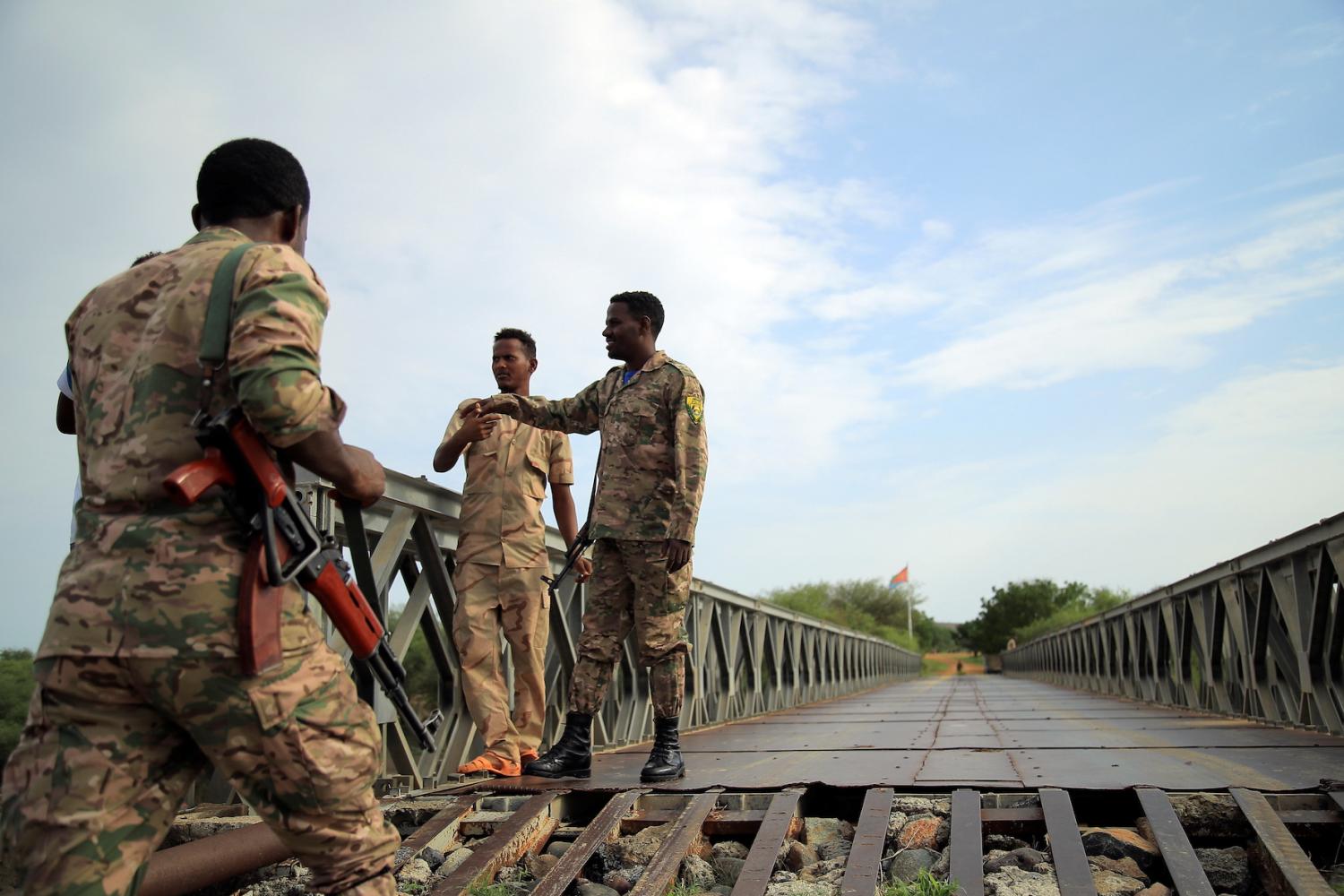


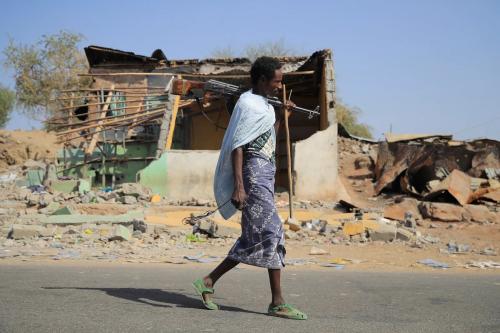
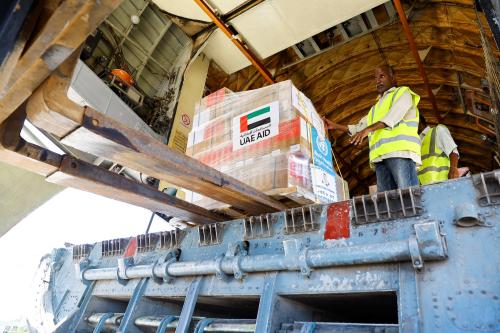
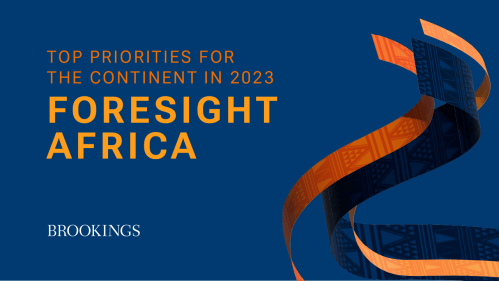
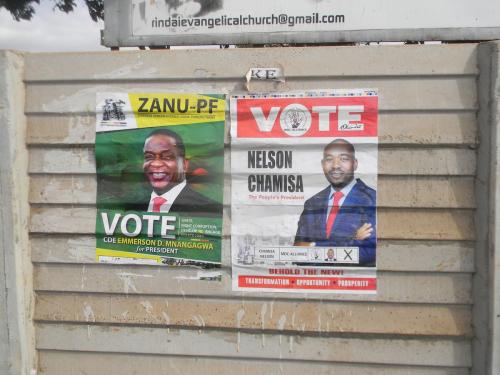
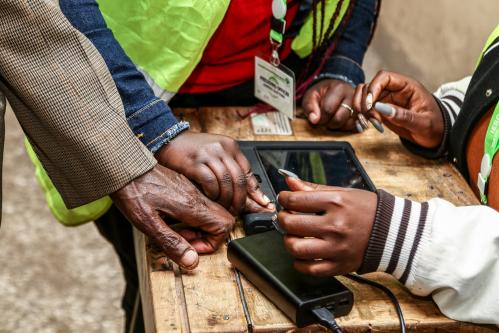
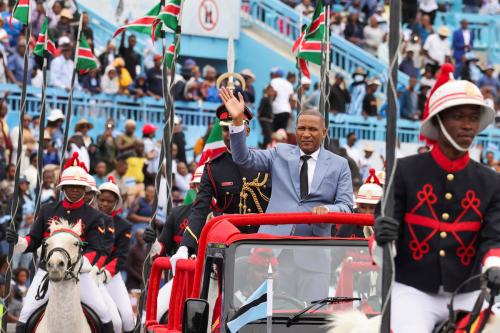
Commentary
Ethiopia’s New Year’s ledger: A controversial new port and domestic challenges
January 16, 2024